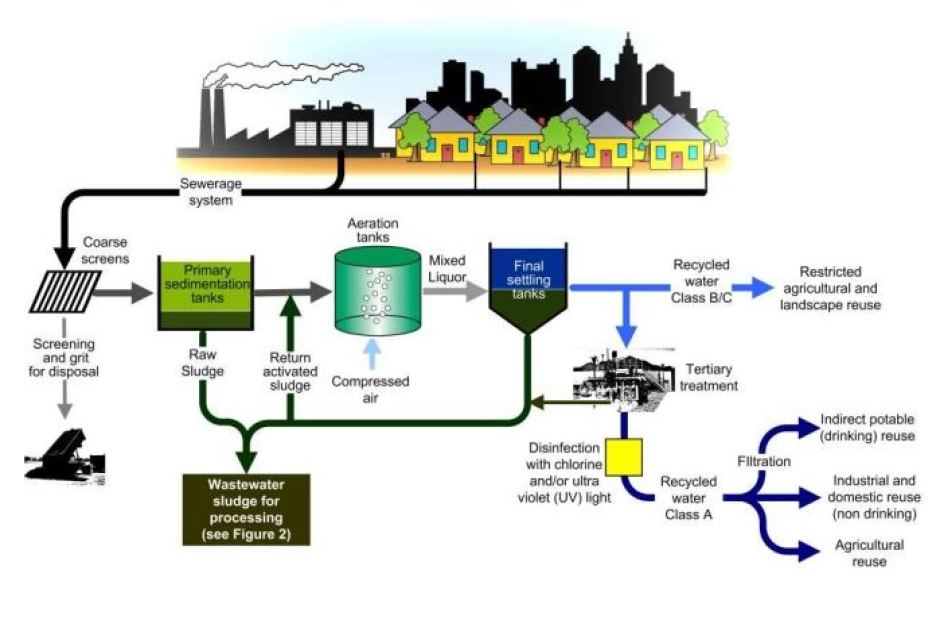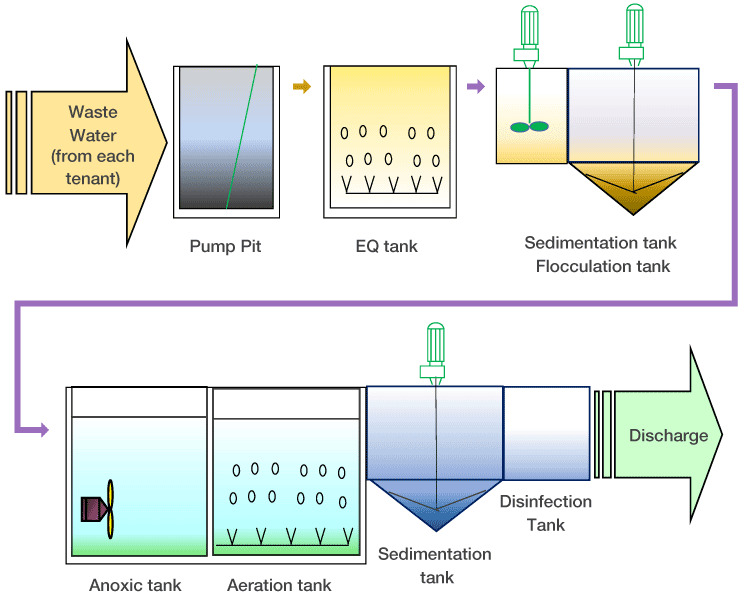Industrial Waste Water Treatment-- Industrial-Grade Water Purification and Purification Solutions
Industrial Waste Water Treatment-- Industrial-Grade Water Purification and Purification Solutions
Blog Article
Obstacles and Solutions in Industrial Waste Water Therapy
The treatment of industrial wastewater offers a multifaceted variety of challenges, varying from strict regulatory compliance to the intricacies of cost administration and technological restrictions. The irregularity in waste make-up better complicates the performance of conventional therapy techniques, usually resulting in intensified operational expenses. Emerging services such as advanced oxidation processes and innovative financing models reveal assurance in resolving these concerns. As sectors face the demand for lasting practices, the question remains: what strategies will ultimately lead to an equilibrium in between conformity, cost-efficiency, and ecological obligation?
Regulatory Conformity Difficulties
Exactly how can commercial facilities browse the facility landscape of regulative compliance in wastewater treatment? The governing framework regulating wastewater monitoring is diverse, frequently differing by jurisdiction and kind of sector.
To efficiently take care of these compliance difficulties, centers should execute durable monitoring and reporting systems that make sure real-time information collection and evaluation. Regular audits and danger assessments can determine prospective conformity gaps, enabling for positive modifications in therapy processes. Worker training programs concentrating on regulative knowledge and finest techniques are vital to foster a culture of conformity within the organization.
Furthermore, engaging with regulative agencies can offer beneficial insights and make clear ambiguous laws. Facilities may additionally gain from talking to environmental professionals that focus on wastewater therapy compliance, making sure that they stay informed of developing guidelines. By adopting these techniques, commercial centers can not only meet compliance needs yet also improve their functional efficiency and environmental stewardship.
Price and Economic Barriers
Browsing governing compliance in wastewater treatment usually presents considerable economic obstacles for industrial facilities. The expenses connected with applying essential treatment technologies, preserving compliance with rigid laws, and managing operational expenses can be discouraging. Several companies face high initial capital investment for the building or updating of wastewater therapy plants, which might stress spending plans, specifically for tiny and medium-sized ventures.
Furthermore, ongoing operational costs, including upkeep, labor, and chemical inputs, add to the monetary problem. The unpredictability of varying energy prices and the possible need for extra investments to meet evolving laws aggravate these financial pressures. Oftentimes, the absence of financial incentives or assistance from federal government bodies makes it a lot more challenging for businesses to warrant financial investments in advanced therapy systems.
In addition, the economic viability of wastewater therapy solutions is often questioned, particularly for sectors with tight profit margins. As a result, it is essential for industrial facilities to check out affordable strategies, such as taking on innovative funding choices, taking part in collaborations, and leveraging emerging modern technologies that can help minimize these economic obstacles while making sure compliance with ecological standards.

Technological Limitations
Countless technological constraints prevent the efficiency of industrial wastewater treatment procedures. One considerable obstacle is the insufficiency of existing treatment technologies to address intricate pollutants. Numerous standard techniques, such as triggered sludge and chemical precipitation, battle with the removal of emerging toxins, including drugs and microplastics. This limitation commonly leads to the discharge of inadequately dealt with water, which can have harmful ecological effects.
Additionally, the scalability of therapy technologies postures a challenge. While some innovative methods, like membrane layer filtration or innovative oxidation, show pledge in regulated environments, their application on a larger scale can be technically difficult and much too expensive. Maintenance and functional complexities further make complex the adoption of these systems, especially for smaller industries with restricted technical expertise.
The assimilation of real-time tracking modern technologies also stays insufficient in numerous therapy centers. Without reliable monitoring systems, operators can not effectively analyze treatment performance or detect potential failures, resulting in inconsistent effluent high quality. Resolving these technical constraints via research and development, along with financial investment in cutting-edge options, is vital for improving the effectiveness of commercial wastewater therapy and making certain regulative conformity.
Irregularity in Waste Structure
In the realm of commercial wastewater therapy, the variability in waste make-up provides a formidable challenge. Industries create wastewater with varied qualities, influenced by variables such as production processes, resources, and operational practices. This heterogeneity makes complex the therapy process, as traditional systems typically have a hard time to successfully deal with the wide array of contaminants existing.
For instance, wastewater from food handling might include high levels of natural matter, while effluents from chemical production could consist of dangerous materials and heavy steels. This variation necessitates versatile treatment approaches to make sure compliance with environmental regulations and secure public health. Furthermore, fluctuations in waste make-up can occur gradually, influenced by modifications in manufacturing schedules, upkeep activities, or the intro of brand-new products.

Cutting-edge Treatment Solutions
Ingenious treatment options are important for attending to the complexities of commercial wastewater management. Typical methods usually fall short in properly removing a large range of pollutants, especially in centers with varied effluent streams. Recent improvements concentrate on integrating innovative modern technologies to improve therapy efficiency and sustainability.
One appealing strategy is using sophisticated oxidation procedures (AOPs), which utilize effective oxidants to degrade organic contaminants. AOPs, consisting of photocatalysis and ozonation, can significantly decrease hazardous materials and boost effluent quality. Additionally, membrane bioreactor (MBR) innovation has actually obtained grip, combining biological treatment with membrane filtration, resulting in premium effluent and minimized impact.
An additional cutting-edge solution is the implementation of source recuperation systems. Strategies like anaerobic food digestion not just treat wastewater however likewise create biogas, which can be utilized as a renewable resource source. Additionally, the adoption of expert system and maker understanding models can enhance treatment processes by forecasting variants in wastewater composition, thereby improving functional efficiency.
These ingenious services not only address governing compliance however also advertise environmental sustainability, paving the means for a much additional resources more resilient and reliable industrial community.
Conclusion
In verdict, attending to the challenges of commercial wastewater treatment calls for a diverse you can try these out strategy that incorporates regulative compliance, expense management, and technical advancements. Cutting-edge solutions, such as innovative oxidation processes and membrane bioreactor modern technology, offer paths to enhance treatment performance. Real-time monitoring systems and collective involvement with governing agencies can advertise lasting practices while reducing financial stress. A commitment to constant renovation in treatment approaches will inevitably contribute to the efficient monitoring of commercial wastewater and environmental management.
The therapy of commercial wastewater offers a complex selection of challenges, varying from stringent regulatory conformity to the ins and outs of price monitoring and read review technical restrictions. Industrial Waste Water Treatment.Navigating regulative compliance in wastewater treatment often presents considerable monetary challenges for industrial centers. Resolving these technical restrictions with research and development, along with financial investment in innovative solutions, is important for boosting the efficiency of commercial wastewater treatment and ensuring regulatory conformity
Wastewater therapy centers should invest in durable tracking systems and flexible therapy innovations capable of fitting differing influent attributes.In verdict, resolving the difficulties of industrial wastewater therapy requires a complex technique that integrates regulatory conformity, expense management, and technical developments.
Report this page